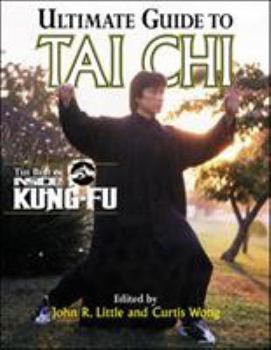Ultimate Guide to Tai CHI: The Best of Inside Kung-Fu
Select Format
Select Condition 
Book Overview
Practiced by millions of people around the world, the ancient and gentle Chinese martial art of tai chi offers the perfect balance of mind and body, strength and flexibility, grace and agility. Its... This description may be from another edition of this product.
Format:Paperback
Language:English
ISBN:0809228335
ISBN13:9780809228331
Release Date:October 1999
Publisher:McGraw-Hill Companies
Length:320 Pages
Weight:1.95 lbs.
Dimensions:0.7" x 8.2" x 11.1"
Customer Reviews
5 ratings
Ultimate Guide to Tai Chi
Published by Thriftbooks.com User , 13 years ago
Item arrived in excellent decision. Shipping was quick. Very satisfied with purchase. Thank you!
Grab Bag of Taiji Wisdom
Published by Thriftbooks.com User , 15 years ago
I'm not really sure where to begin with this. The book is a wonderful collection of Taiji Quan wisdom. The articles on each topic present you with a wide variety of perspectives on each of the subjects discussed. In particular, the history had 3 different authors present 3 different views. There is a section on history, training, how to tell good form from bad, difference between wushu and martial aspects of Taiji Quan, spotting good teachers, and many many more. This is without a doubt, something I wish I had when I started my Taiji Quan practice, and something you will want. I highly recommend the book to every Taiji practitioner. You will benifit greatly from the diversified wisdom of long-time masters of the art.
Outstanding complilation of articles on tai chi
Published by Thriftbooks.com User , 19 years ago
This is a collection of 29 articles on different topics in tai chi. The is range of subjects is quite diverse, from tai chi history to theory and practical applications, and even an article on tai chi in the National Football League. There are four main sections: Histories and Traditions; Basic Techniques: Advanced Techniques; and Profiles and Personalities; and there is also an Appendix showing practical spplications. Last but not least, there is a complete pictorial presentation of the entire yang form that is practically worth the price of the book by itself. The articles cover just about every aspect of tai chi, and I also noted there are several articles on the chen family style, reflecting the increasing interest in this style in recent years. It is a style especially known for its chin na and martial applications, and have always wanted to study it because of that, since my first tai chi style, known as the "square wu style," because it atypically contains both linear and circular movements, is especially rich in chin na applications too, but I've never had the opportunity to study the chen style yet myself, being mainly a wu and yang style practitioner, but I am pleased to see the chen style finally getting some of the recognition it deserves. About the only lack in terms of coverage in the book is on pressure point strikes and dim mak. Many people aren't aware that tai claims to be the original dim mak technique and that originally there were no "pushing" techniques in tai chi, or pushing hands exercises, it consisted only of potentially deadly pressure point strikes, the severity of which only depended on how hard the point was struck. But as this knowledge is perhaps the only remaining area in tai chi that remains closely guarded I wouldn't expect it to get discussed in a book like this. But overall the book contains a lot of good information on tai chi, and is the only book in this format that I know of on the subject, with articles by so many recognized experts. Since we're on the subject, I wanted to say a little more about the dim mak. Although I value tai chi as the most physically profound and difficult of the martial arts I've studied (and I hold instructor and/or black belt rank in Chinese, Japanese, and Korean systems), one has to take the Chinese medical theories of chi and meridians and pressure points mainly as descriptive analyses for further scientific analysis. To give you an example, my first kung-fu and tai chi instructor would occasionally say that a certain point was more vulnerable in the afternoon. Well, being a polite student (and his senior student) I never contradicted him on this, but this is now 25 years later and now I'm the teacher. The simple fact is that almost any pressure point strike could have a greater effect later in the afternoon than in the morning since that's when many people reach their physiological low during the day, and things like blood sugar and circulating catecholamines (such as epi
An Exellent Book
Published by Thriftbooks.com User , 23 years ago
This volume is a compilation of the various article in the aforementioned magazine. The variety of authours creates a wide viewpoint of the physical and metaphysical theories. The history is thurough and informative, the philisophical theory is highly accesible while still being vivid and accurate, and the still photos of the Yang style set are a gift to readers interested in the practice. Being a follower of the Taoist philosophy and a student of the higher martial disiplines this book remains a favorite of mine second only to Bruce Lee's legendary work "The Tao of Jeet Kune Do".
Ultimate Guide---the perfect title!
Published by Thriftbooks.com User , 24 years ago
This is one of the most concise, and complete histories, and "how to do it" books on Tai Chi that I have ever read! The photos of the person performing the different moves in the Yang form of Tai Chi are excellent! Any Tai Chi student should have this one in his library!




